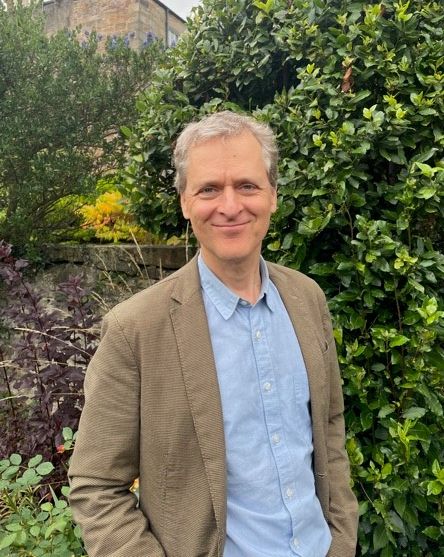In the run-up to the global biodiversity conference, COP15, we present a series of posts in partnership with Scottish Government and NatureScot, showcasing Scotland’s innovative, high-impact research supporting biodiversity conservation. By way of introduction, Scotland’s Chief Scientific Adviser for Environment, Natural Resources and Agriculture, Mathew Williams, explains how scientific research and evidence is vital to tackling the nature and climate crisis.

I grew up near botanic gardens and spent much of my childhood climbing exotic trees and hiding among the tropical fronds in Victorian hothouses. As a teenager, the African droughts and famines of the 1970s and 1980s showed me societies unprepared for and under threat from climate extremes.
It seemed to me then – and it still does – that a scientific approach to our relationship with nature could help solve such problems. These ideas led me to a degree in biology, a doctorate in environmental sciences, and a research career that has taken me to a huge diversity of ecosystems, from the Alaskan tundra to the Amazonian rainforests.
I have learned about the extraordinary connectedness in our biosphere between life and landscapes, plants and soils, land and atmosphere, water and energy. I have also witnessed and recorded huge changes in our environment over my research career. Our atmosphere today has nearly 20% more CO2 than in 1996 when I made my first measurement in Alaska. Brazilian rainforests I studied in 1998 have now been cleared. When I began my career, ecologists specifically went to study pristine ecosystems, to learn about natural processes away from human pressure. Such an idea seems bizarre now. Ecologists today put human pressures at the heart of much of their research.
So, since coming to Edinburgh in 2000 I have included in my research Scotland’s human-dominated ecosystems – farms and forests.
My job as Chief Scientific Adviser is to ensure that all environmental science used within Scottish Government is high quality, particularly around the role of nature in climate change and the future of farming and land use. I also coordinate Scotland’s world-class research centres in environment, natural resources and agriculture to ensure their science is taken up and used by society.
The combined climate and nature emergencies are at the heart of government, and these topics have strong scientific perspectives. So, I have a chance to support the development of effective policies to meet key environmental challenges of our time, mapping a route towards a desirable social and environmental future that is fair and viable.
On Scotland’s dashboard for safe operations, there are already warning lights for biodiversity loss, for air, soil and water pollution and for land system change. Some of these lights have been flashing for decades but the warnings are now more urgent. The Climate Change COP at Glasgow last year highlighted the challenges we face to avoid dangerous climate change. The global biodiversity conference in China this year, COP15, will highlight the linked nature and climate crises. Poor land management, driven by human consumption, is destroying the habitat diversity that species require.
In Scotland, science has helped in conserving red squirrels and reintroducing sea eagles. But there are still outstanding questions and challenges for science that I want to help resolve. Which trees should be planted and where, to optimise carbon stores and biodiversity? How can we track peat restoration to be sure it stores carbon for decades and enhances biodiversity? How will climate change effect Scottish agriculture, and what opportunities and threats will arise? How can we change our patterns of consumption to be more sustainable?
Science has shown that profound global changes are underway and further changes are coming. Science also helps us monitor biodiversity, determine its requirements and then evaluate whether our interventions work. There are great opportunities to attract and train people into environmental jobs across Scotland, to be part of the solution.
Covid taught us how important it is to have real-time scientific data on the state of infections, vaccinations and variants. Likewise, in tackling our environmental crises we need to focus now on setting up systems to provide data on the state of Scotland’s soils, water bodies, atmosphere, peatlands, trees and biodiversity. This information will help policymakers and society to see the success or otherwise of the actions we take, and to make effective adjustments to our plans.
We also need to use science, allied with economic and social studies, to scope out scenarios for what a net zero Scotland in 2045 will look like in terms of wealth and well-being. Trade-offs are inevitable, but can be made justly once society chooses the scenario it prefers. By understanding how we are going to live in Scotland we can generate the momentum towards the changes required for a positive future for all.
A longer version of this article was published in The Scotsman on 23rd March 2022.
